ASDI
ASDI stands for Automated Spectral Diamond Inspection. It is a device which can analyse and authenticate very large quantities of colourless melee diamonds at a low cost.
- Colourless round melee diamond authentication
- Separating diamond imitations
- Separating HPHT treated diamonds
- Separating synthetics (CVD & HPHT)
- Customizable size-sorting (optional)
The machine uncovers colourless synthetic diamonds, both HPHT and CVD grown, as well as colourless HPHT-treated diamonds.
In 2007, the Swiss Gemmological Institute SSEF and the electronic laboratory of the University of Basel joined their expertise and launched the ASDI project. After five years of research & development, OPTEC Industries brought their know-how in automation and size-sorting.
Finally in 2013, the first ASDI machine was operational at the Swiss Gemmological Institute SSEF and since then, has screened more than a million of colourless melees hereby protecting the Swiss watch and jewellery industry. As a result, four ASDI units are now operating at two major Swiss diamantaires and two major Swiss watch and jewellery groups.
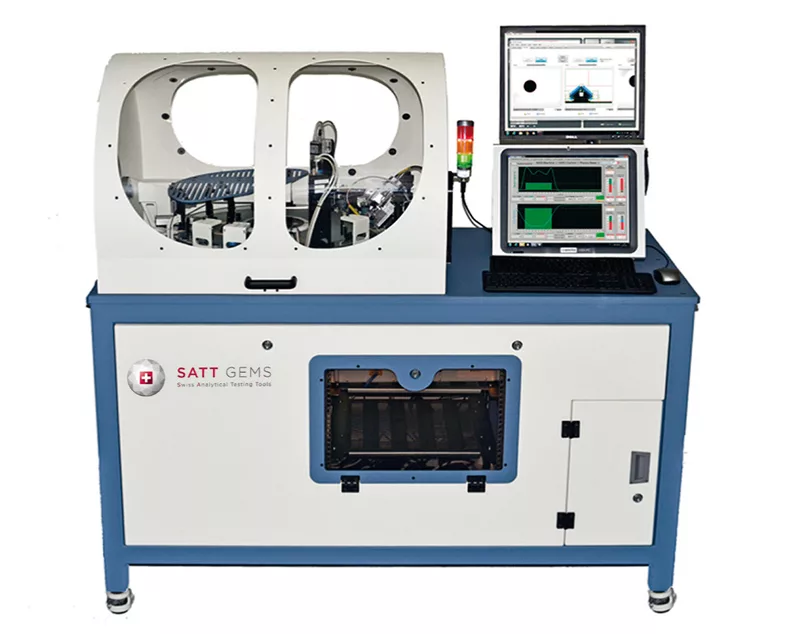
Principle
Diamond positioning
An operator pours a large batch – several thousand – of colourless melees into a vibrating bowl that delivers each single stone onto a rotating glass plate. A series of specially designed arms positions each stone table down and separates them. A digital camera pre-checks each stone for their size, position and clearance before analytical inspection begins.
Diamond inspection
A Raman probe identifies all possible diamond imitations that are automatically ‘rejected’. Then, a highly sensitive spectrometer checks the short wave ultraviolet (SWUV) transparency of each diamond. If its transparency is significantly high, the stone would be automatically rejected as a potential HPHT treated diamond or a potential synthetic diamond (HPHT or CVD grown).
Diamond size-sorting (optional)
A series of digital cameras record up to fifteen different measurements for each single authenticated diamond (precision for diameter measurements: ± 0,005mm). An automatic sorting system distributes the diamonds into a maximum of four different bins according to their size. This function is conveniently customizable and has no impact on the ASDI sorting speed.
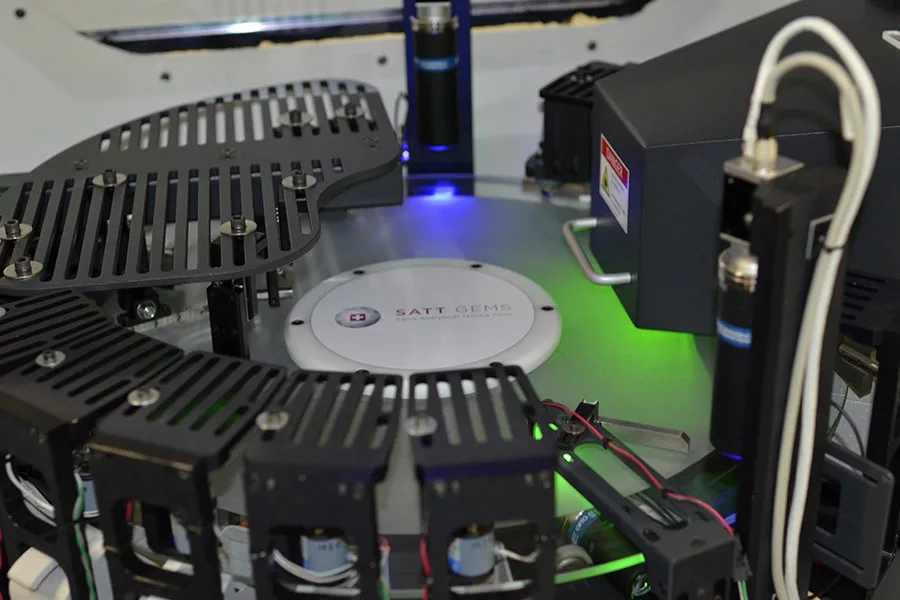
Top view of the ASDI
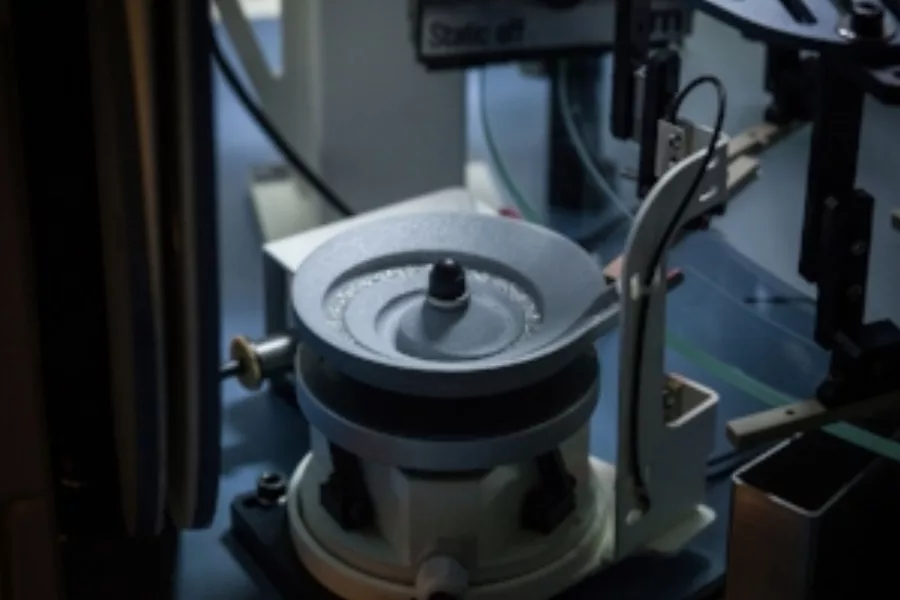
The vibrating bowl regulates the flow of melee diamonds onto the rotating glass
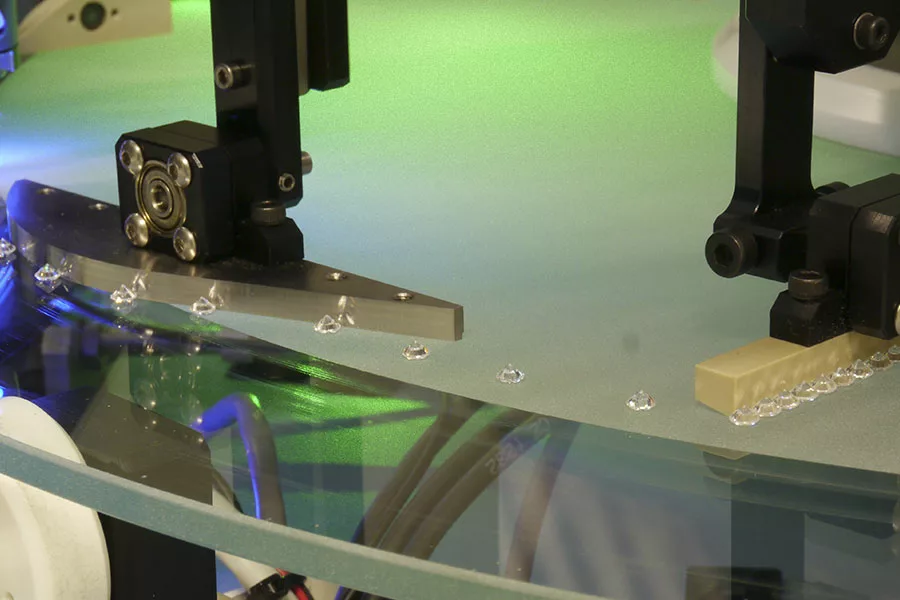
A distribution arm regulates the distance between two diamonds
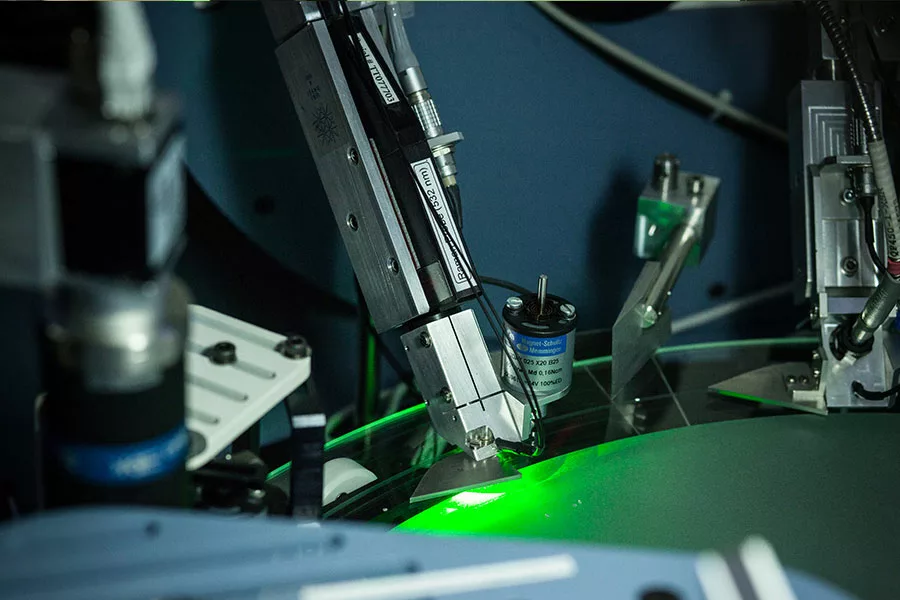
A green laser probe checks for possible diamond imitations
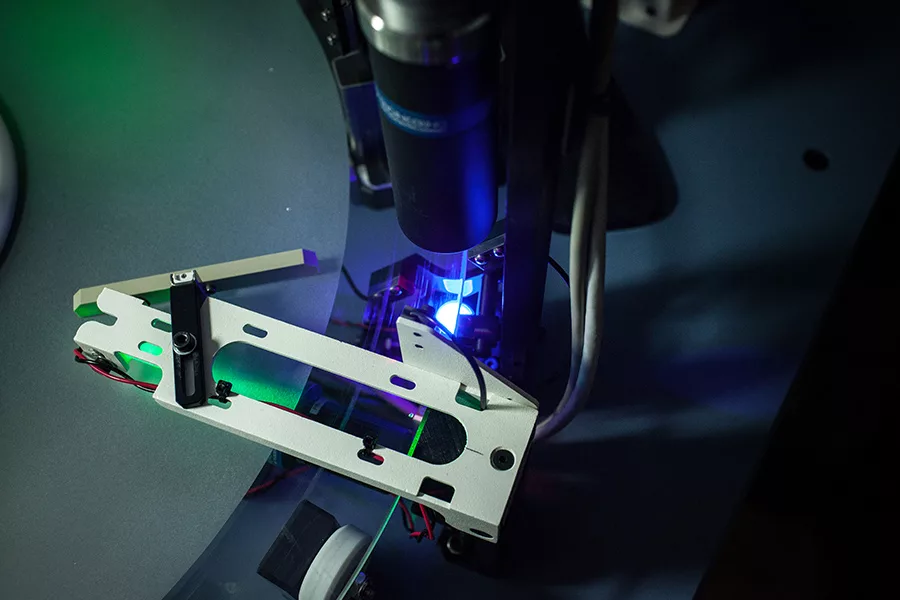
A high resolution digital camera records the measurements of each tested diamond
Technical details
Sorting speed
The average sorting speed is 4’000 stones per hour.
Adjustable distribution of diamonds on the rotation glass.
Note: Sorting speed highly depends on the following factors:
- Cleanness of stones
- Room humidity rate
- Operator’s experience
Diamond and batch requirements
- Diamond shape: round
- Diamond cut: brilliant, 16/16 or 8/8
- Minimum to maximum acceptable diameter: 1.00 mm to 3.80 mm
- Maximum diameter range in one batch: ± 0.10 mm
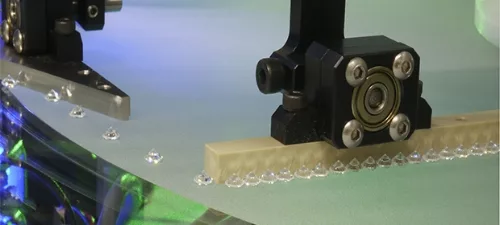
Conformity (CE)
The ASDI machine passed European Conformity tests for the following norms:
- 2006/42/CE (European Union Directive on machinery) – 2006/95/CE (European Union Directive on machinery) – EN ISO 12100: 2011 (Safety of machinery)
- EN 60204-1 (Electric equipment of machinery)
- EN ISO 13849-1: 2008 (Safety related parts of control systems) – EN 61000-6-2 (Electromagnetic compatibility – immunity)
- EN 61000-6-4 (Electromagnetic compatibility – emission
NOTE: The ASDI machine is a ‘class A equipment’, which means that it should be used in an industrial environment. In a domestic environment this product may cause electromagnetic interference in which case the user may be required to take adequate measures.
Specifications
- Electricity: 230 VAC – 50 Hz – 2 kW
- Dimensions: 170 cm x 90 cm x 160 cm, (L x W x H)
- Total weight: 350 kg
- Temperature range: between +15°C and +25°C
- Humidity range: between 50% and 60%, never exceeding 70%
- Observed sound level in normal use: <70 dB
